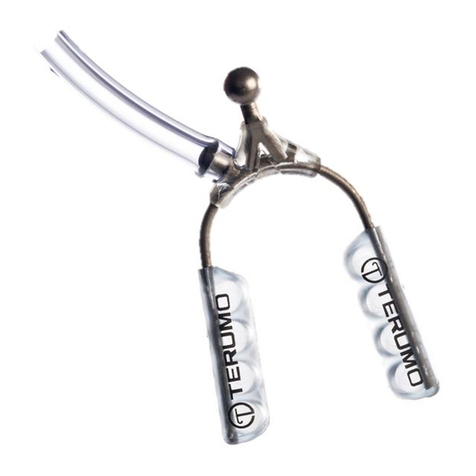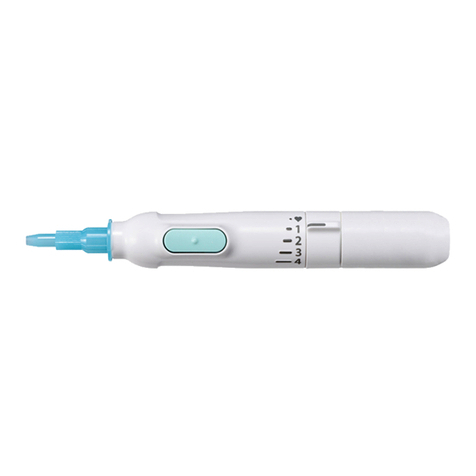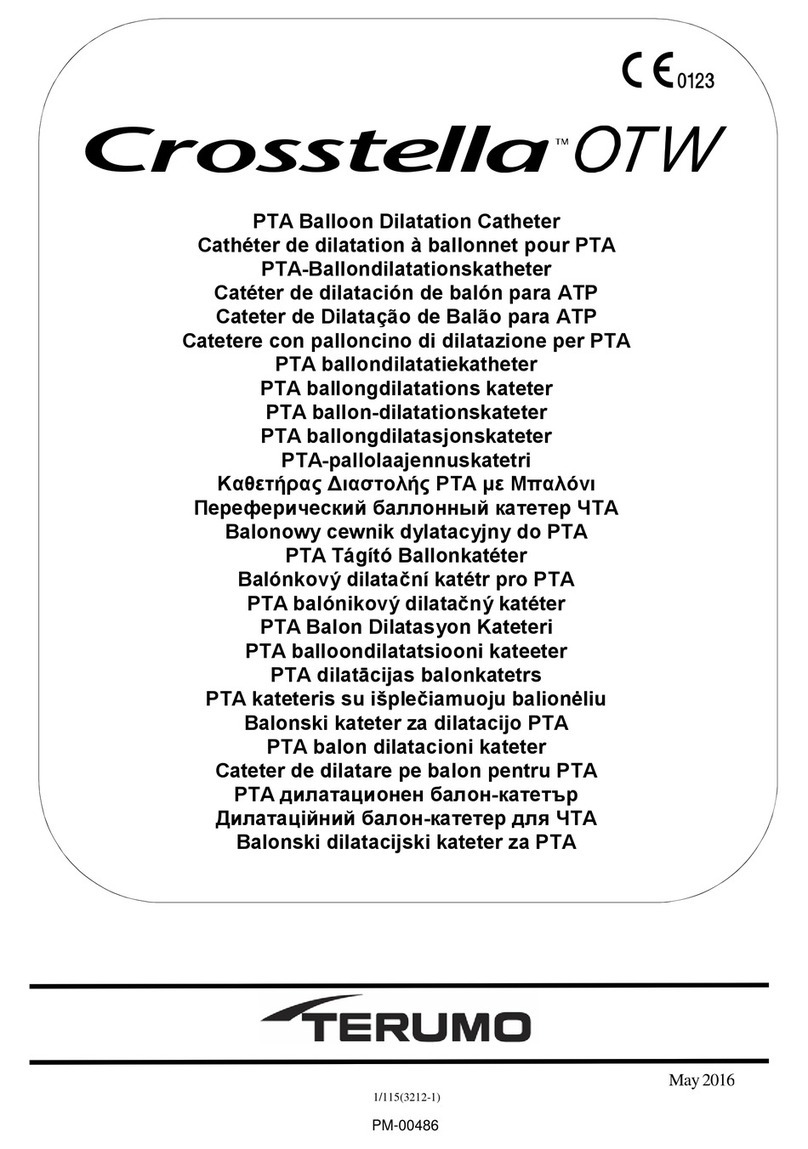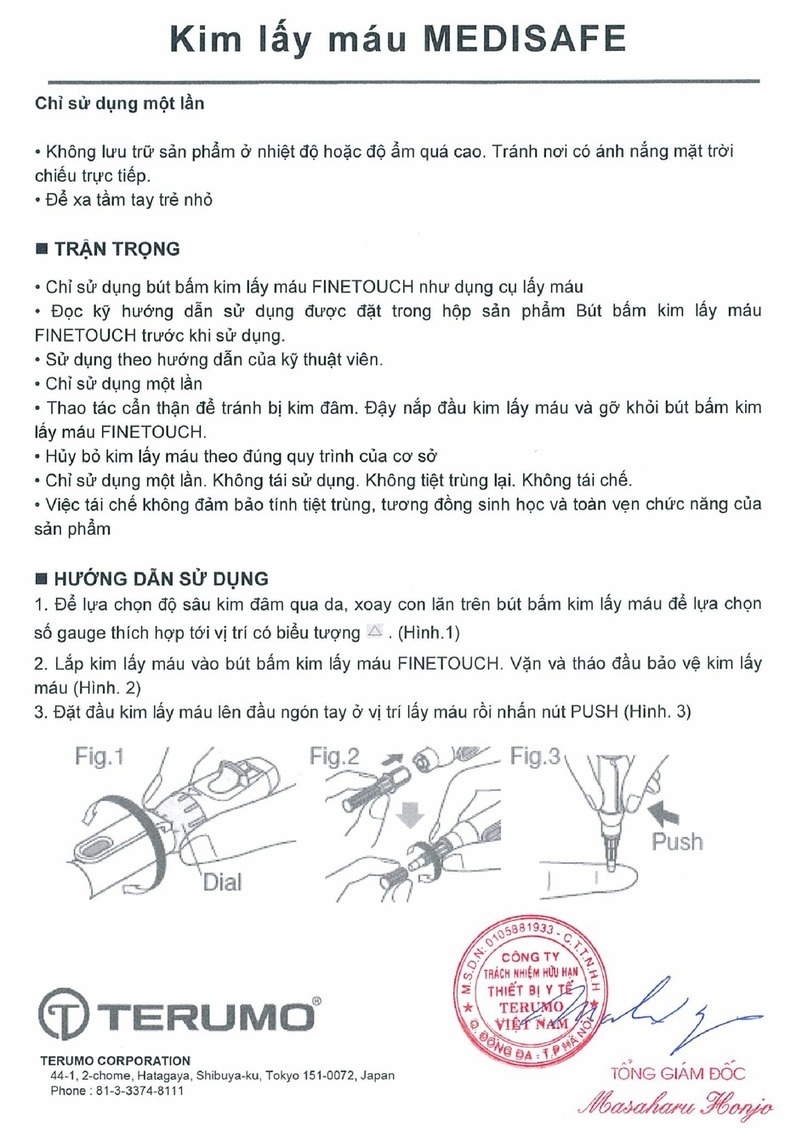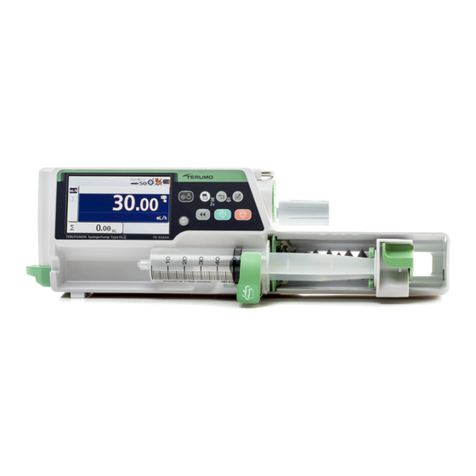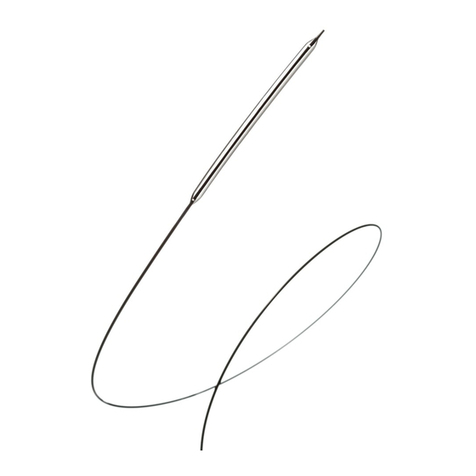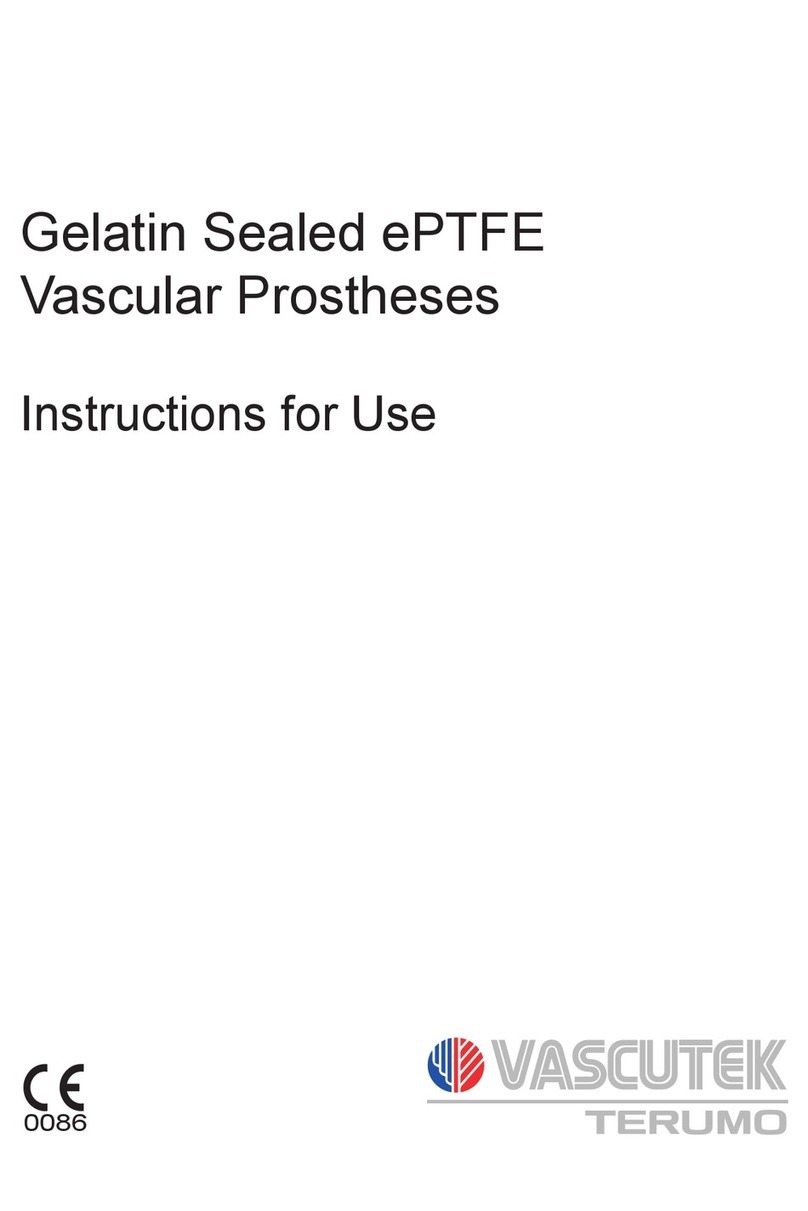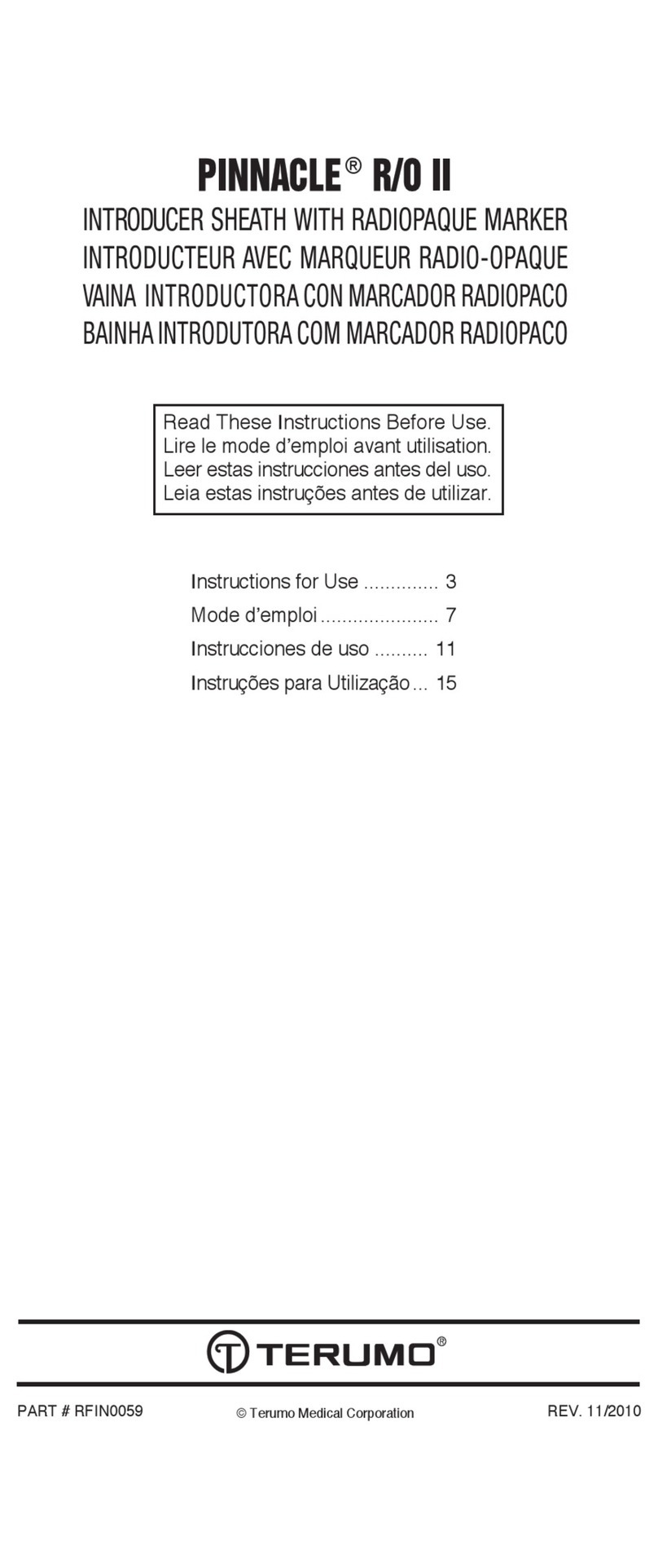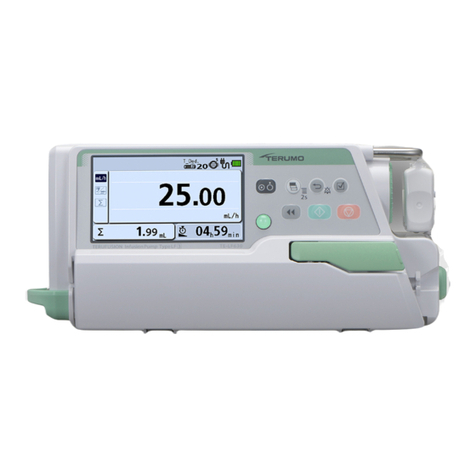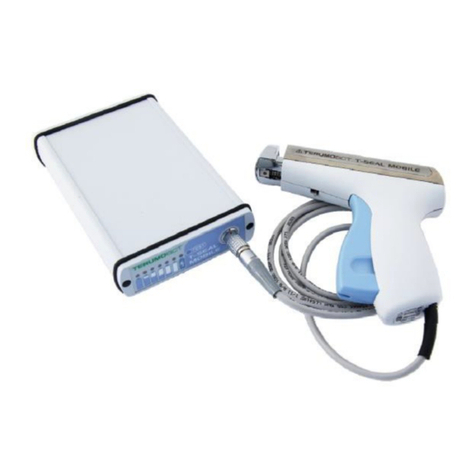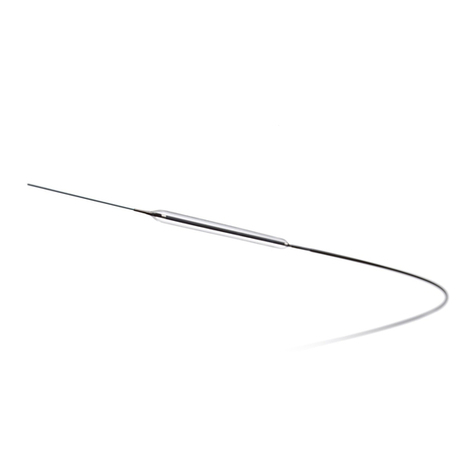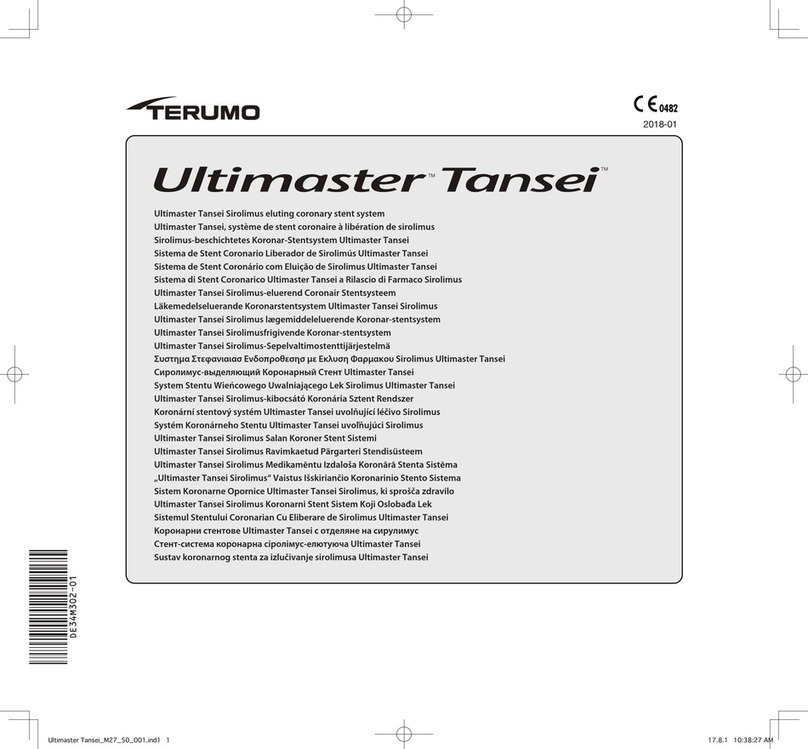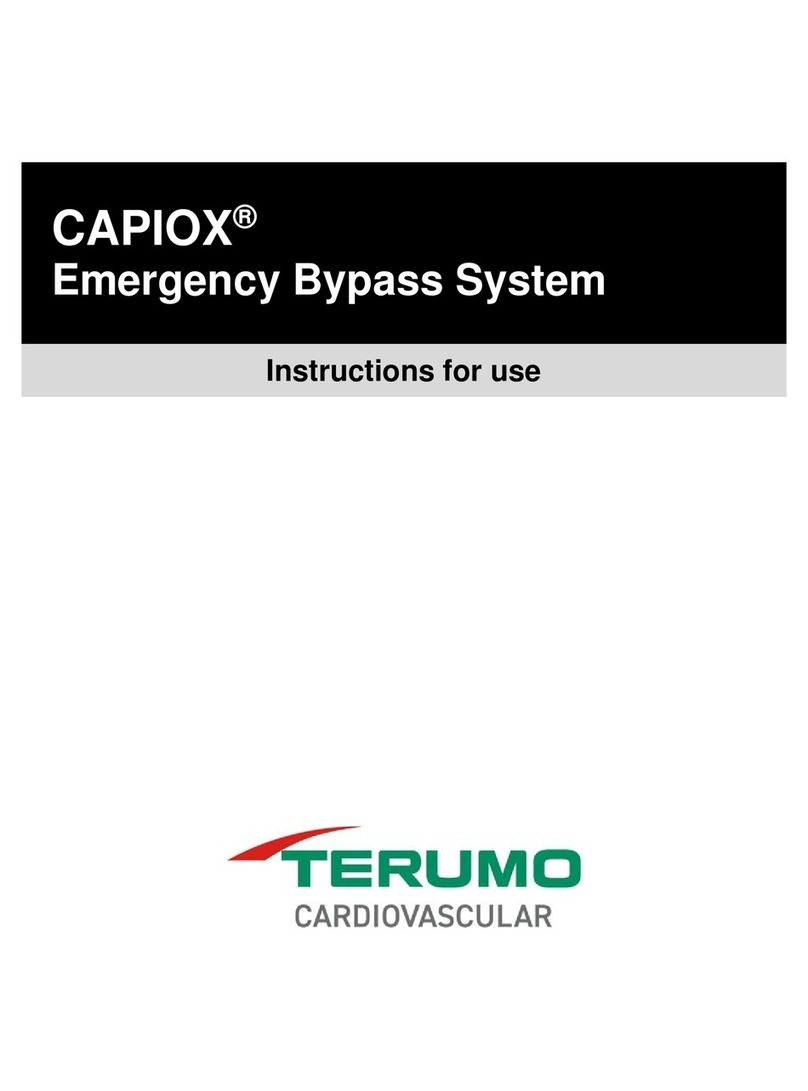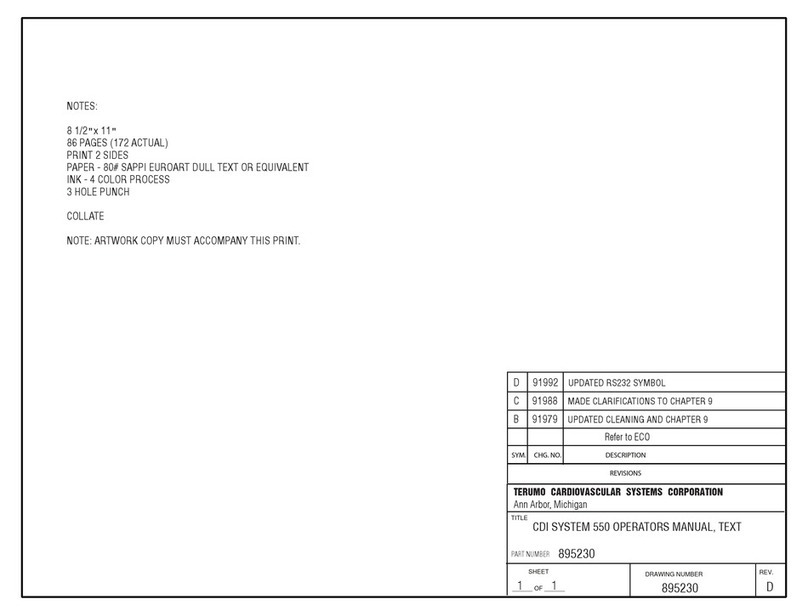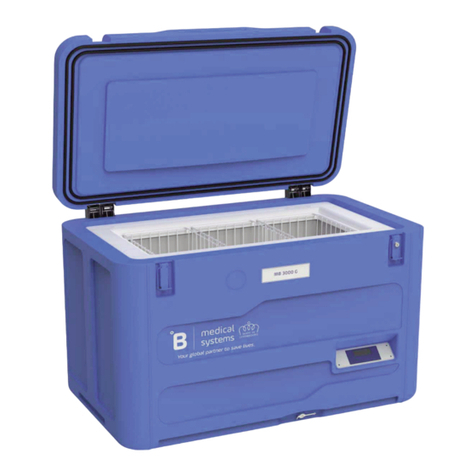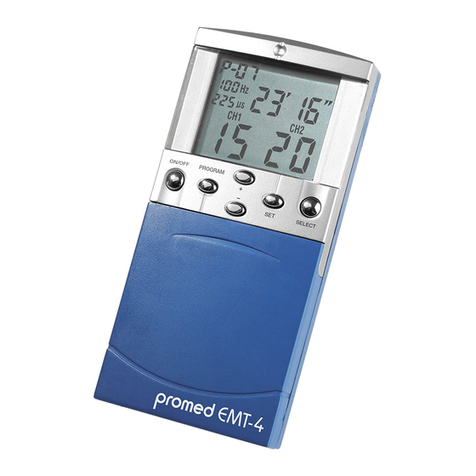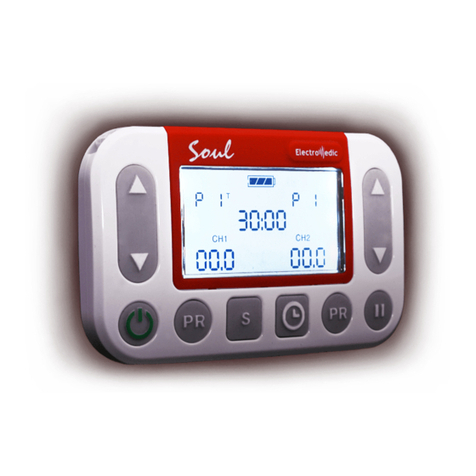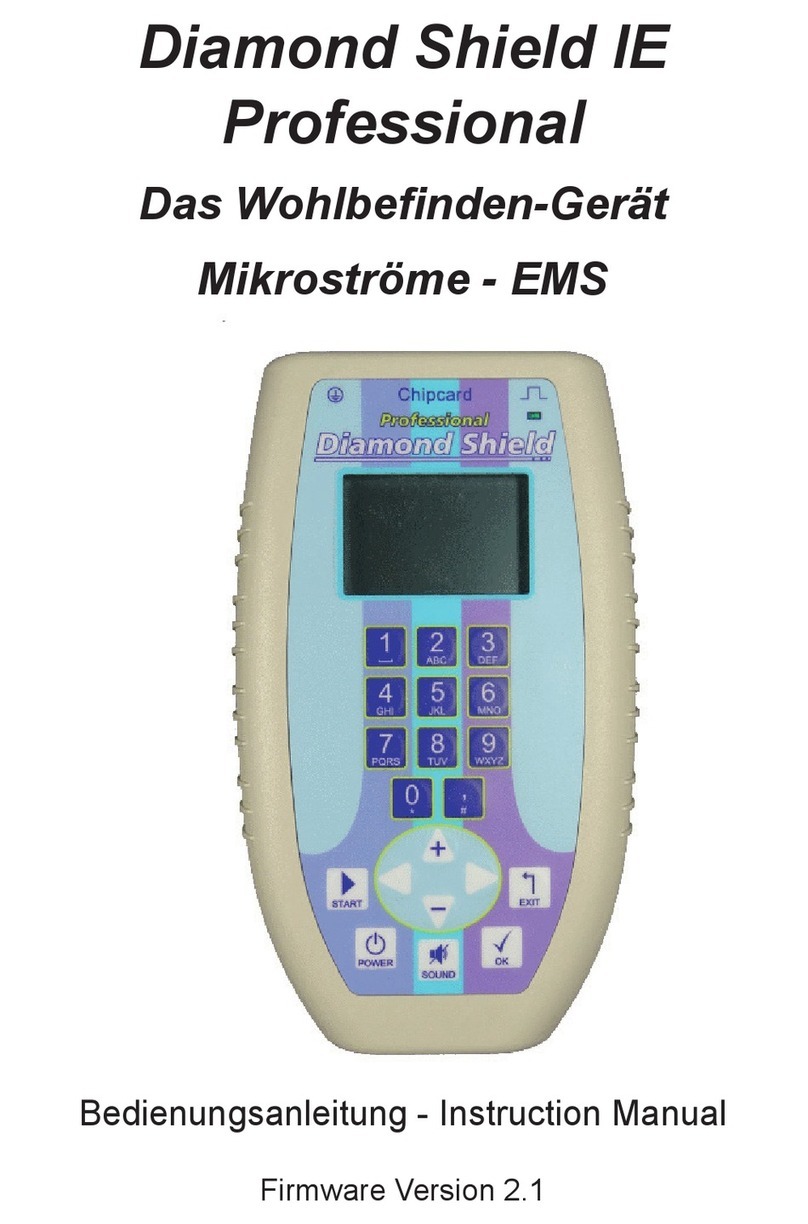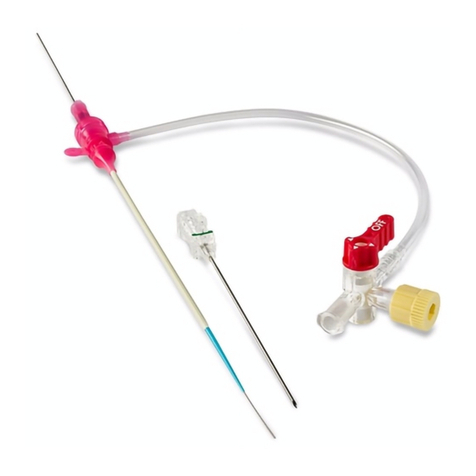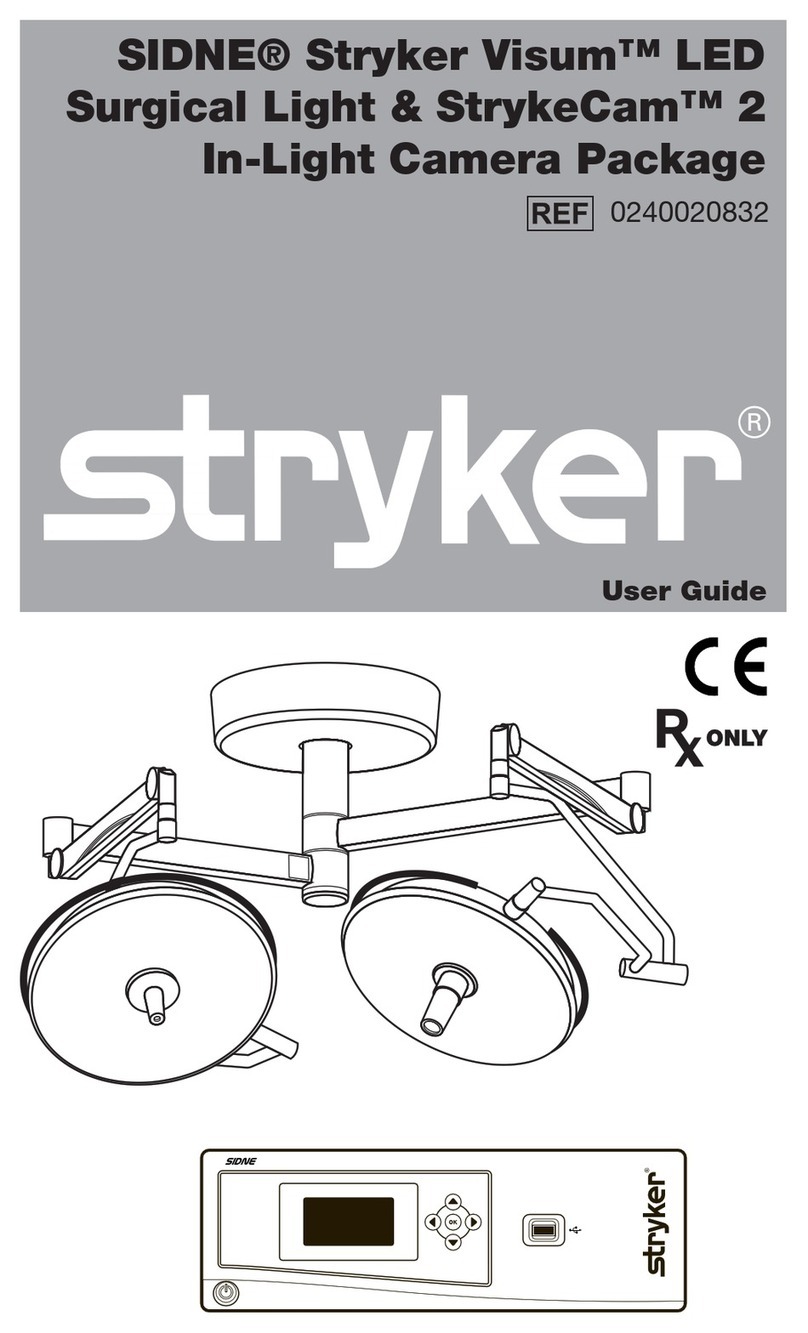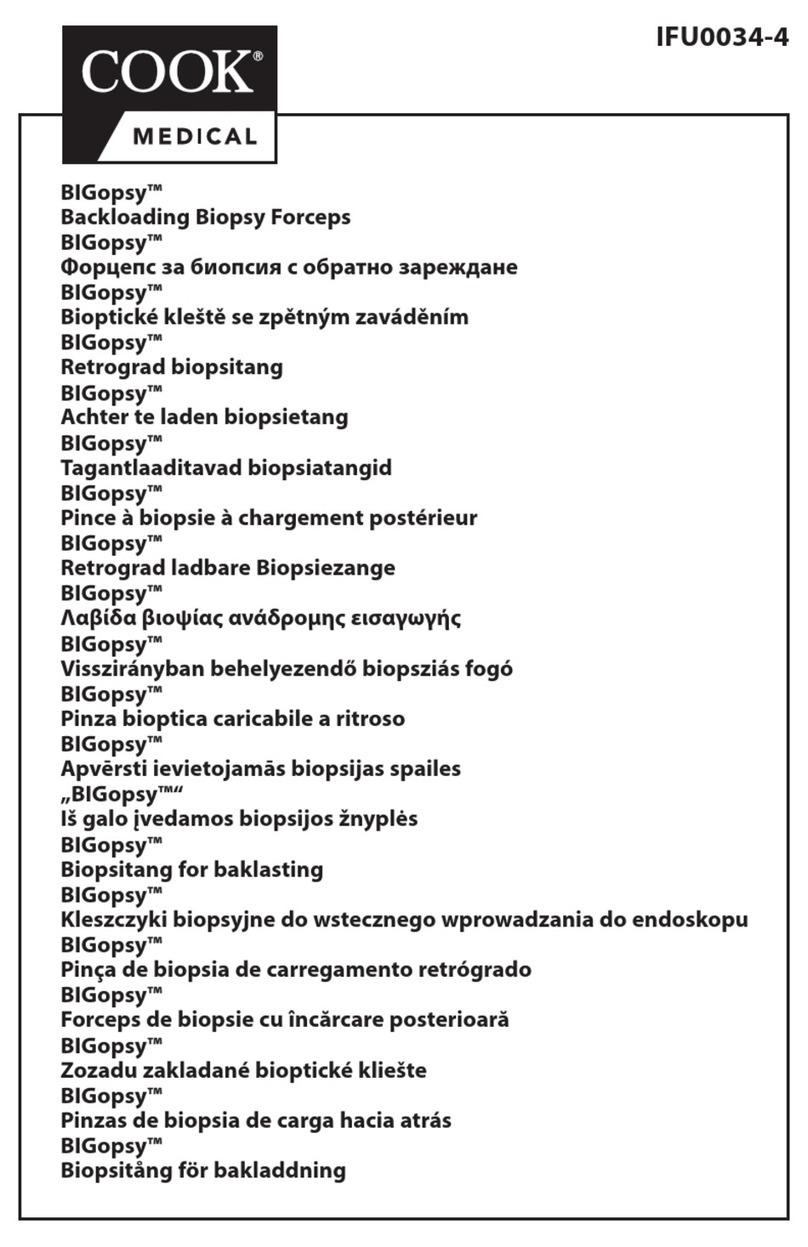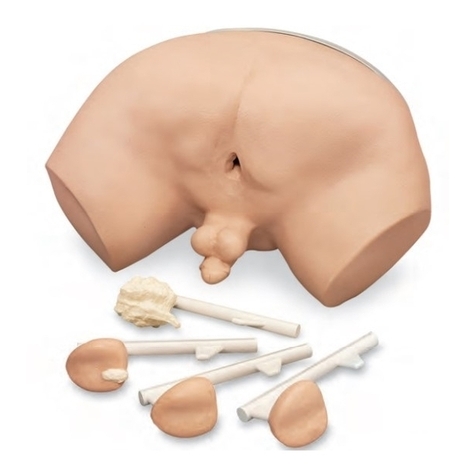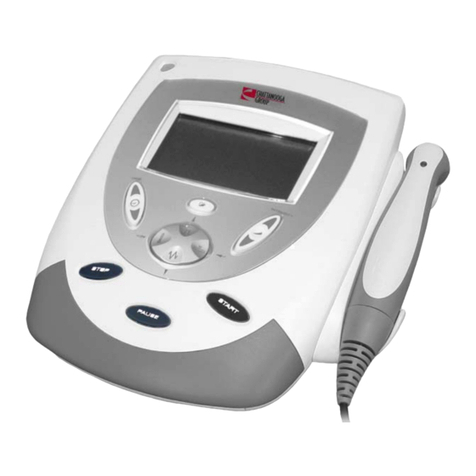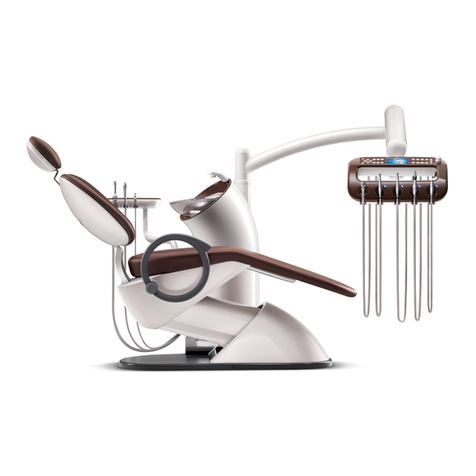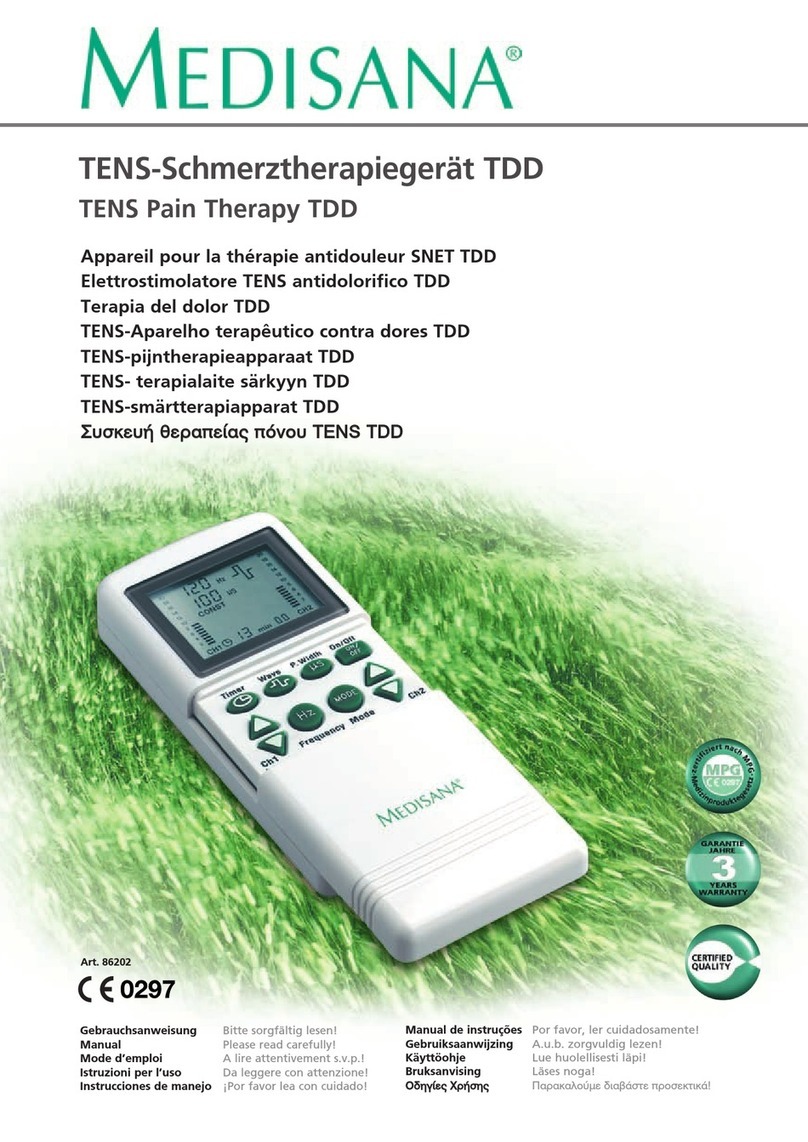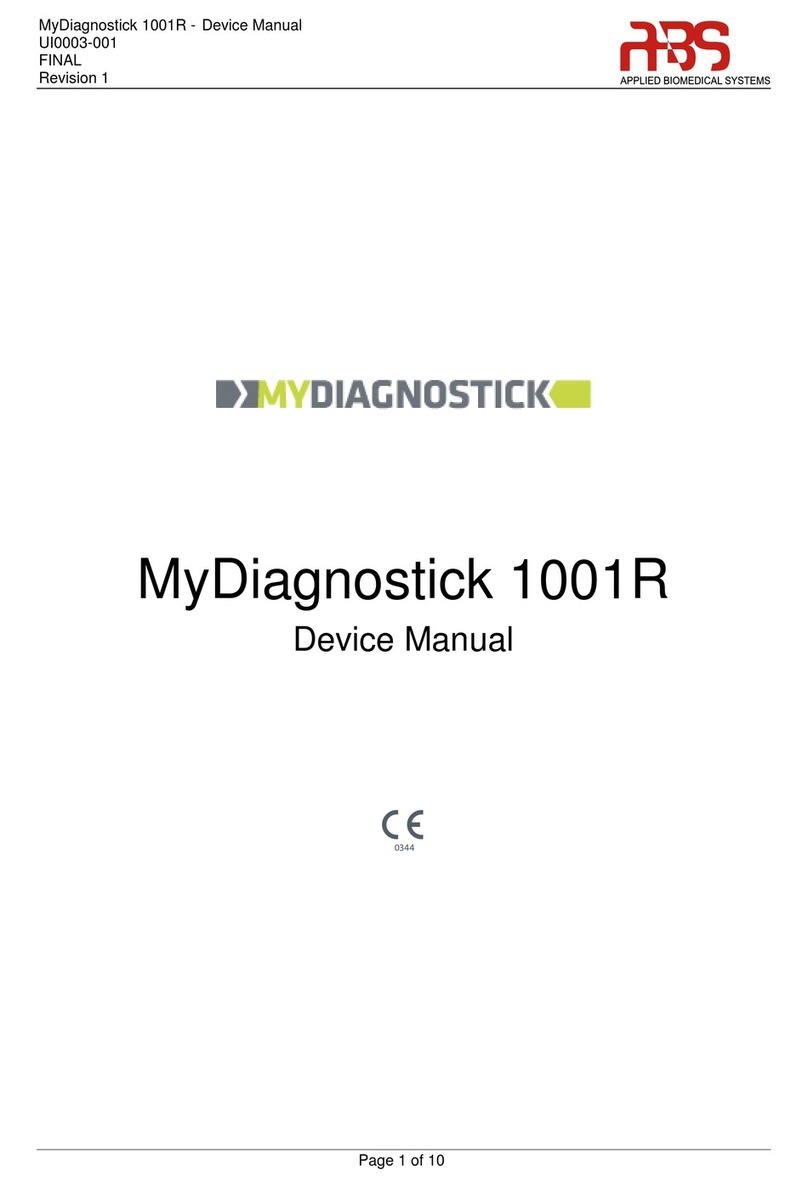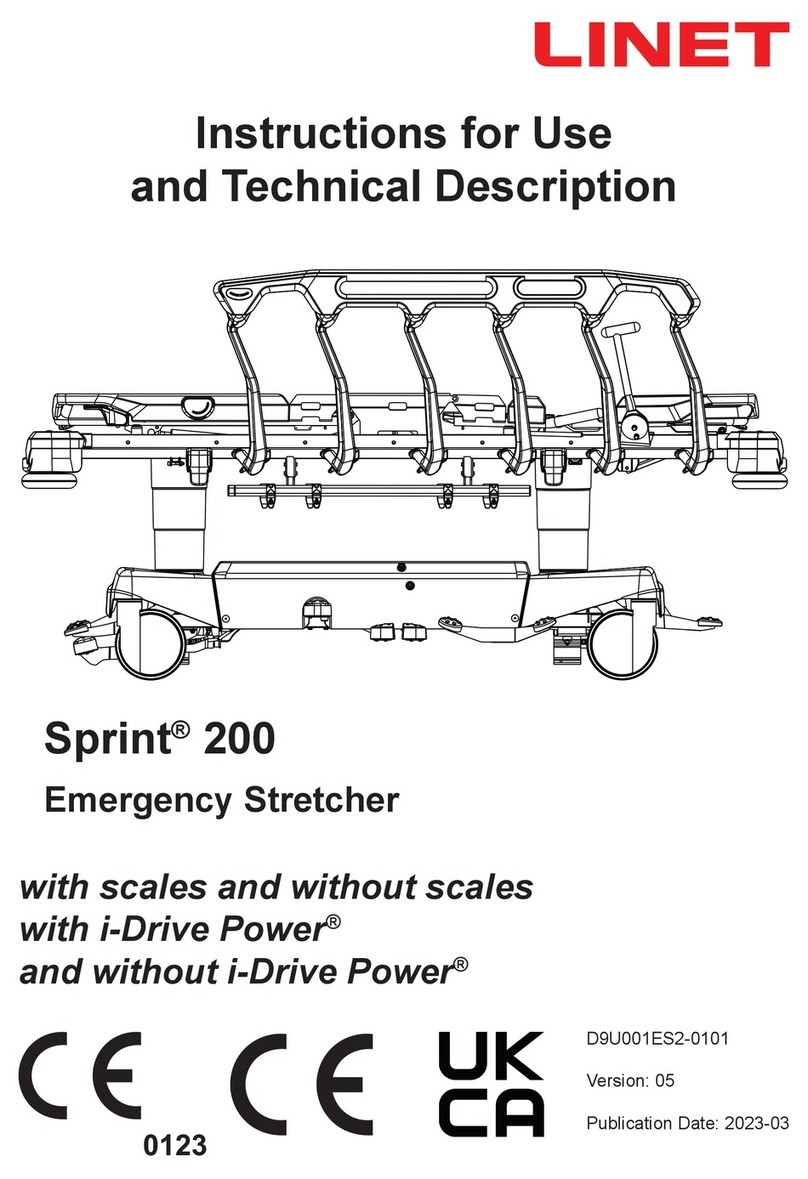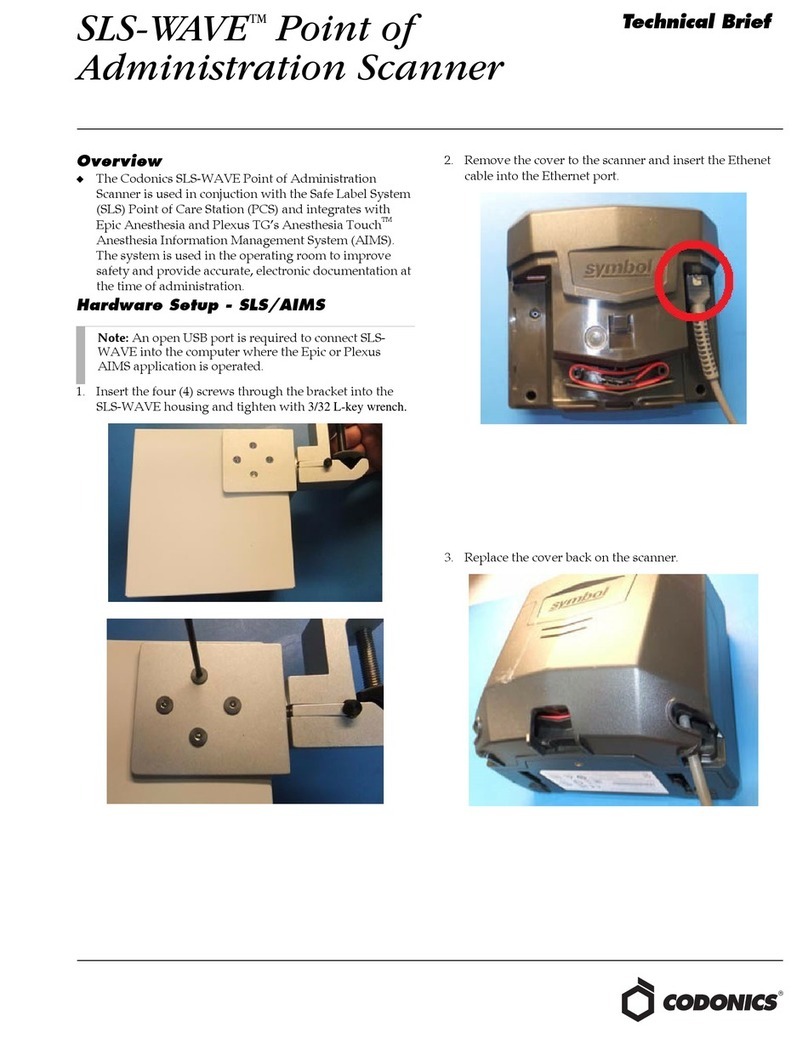
Step Taper ----------------- High Strength
Arteriovenous conduit for blood access. Stepped
taper and short taper congurations minimise the risk
of steal syndrome and high cardiac output4.
Step Taper - Central
Support
High Strength &
Compression Resistant -----------------
Arteriovenous conduit for blood access. Stepped
taper and short taper congurations minimise the risk
of steal syndrome and high cardiac output4.
matched to the inside diameter of the graft.
Failure to size the catheter correctly or the over-
ination of the balloon may result in rupture of
either the graft or the balloon.
(c) Cut the graft long enough to ensure that no
stress exists on the anastomosis. The patient’s
body mass and likely extremes of their posture
must be considered when determining the length
of the graft to be implanted, otherwise stress
may be placed on the anastomosis. Failure to
consider these aspects may cause anastomotic
disruption, resulting in excessive bleeding, loss
of function or possible amputation of limb and in
the worst case death.
(d) The graft must not be lled with blood before
it has been passed through the tunnel. Exerting
pressure may cause blood components to be
passed through the graft wall leading to the
possible formation of seroma6.
The outer ePTFE wrap on wrapped grafts is
designed to be removed.
No preclotting
required.
The gelatin sealant may not
meet the design specication after the
expiration date because of hydrolytic action.
Do not reuse, reprocess or resterilise.
Reuse, reprocessing or resterilisation may
compromise the structural integrity of the device
and/or lead to device failure which, in turn, may
result in deterioration of health or death of
patients. Reuse, reprocessing or resterilisation
may also create a risk of contamination of
the device and/or cause patient infection or
cross infection, including, but not limited to the
transmission of infectious disease(s) from one
patient to another. Contamination of the device
may lead to injury, illness or death of the patient
end-user.
6
Grafts only to be implanted by Vascular
Surgeons who are experienced with the specific
techniques required by these medical devices.
Thin wall grafts are not recommended
for axillo-femoral or axillo-bifemoral bypass
reconstruction because of the potential for
anastomotic disruption during extreme body
movement.
Unsupported grafts must not be implanted in
such areas where total or partial occlusion can
occur as a result of the movement of a patient’s
body.
These prostheses should not be implanted
in patients who exhibit sensitivity to ePTFE or
materials of bovine origin.
These prostheses should not be implanted
in the Central Circulatory System as defined
by Annex IX, 1.7 of the Medical Device
Directive 93/42/EEC with the exception of
prostheses implanted using the Blalock-Taussig
procedure3.
Grafts with an external support over the entire
length are recommended for blood access
purposes, however it has been demonstrated
that ePTFE (Unity) supported grafts maybe
used for such applications5.
For blood access applications, do
cannulate the portion of the graft with central
spiral support, however it has been demonstrated
that this is not applicable for ePTFE (Unity)
supported grafts5.
Do remove central spiral support.
Attempts to remove this support may damage
the graft. If damage occurs, discard the graft.
The following precautions should be taken:
Point (a) as gelatin
sealed ePTFE grafts feature a degree of
longitudinal elasticity :-
(a) Excessive tension on the prosthesis must be
avoided but moderate tension is essential.
(b) When using embolectomy or balloon
angioplasty catheters within the lumen of a
graft, the inated balloon size must be carefully




















